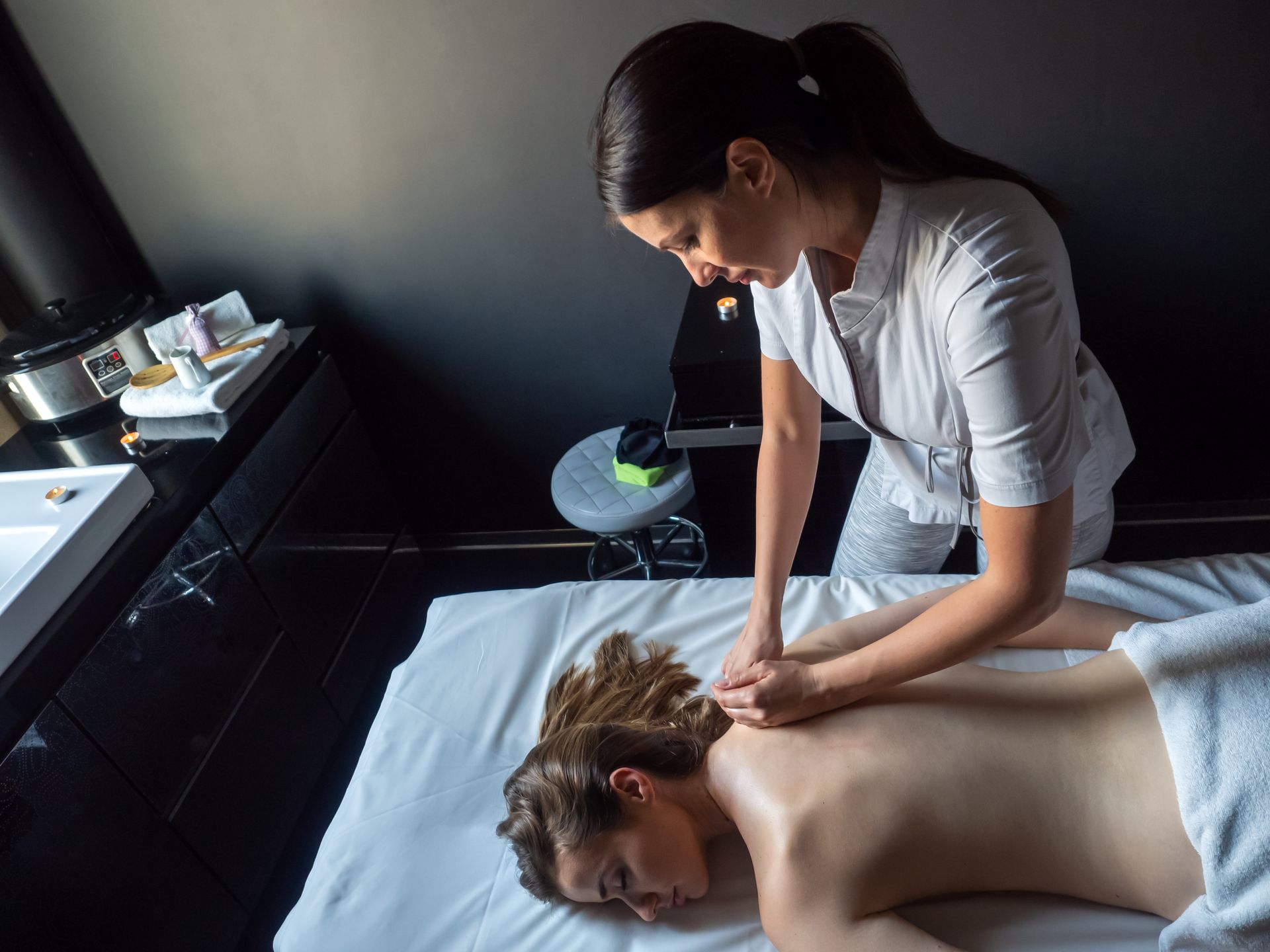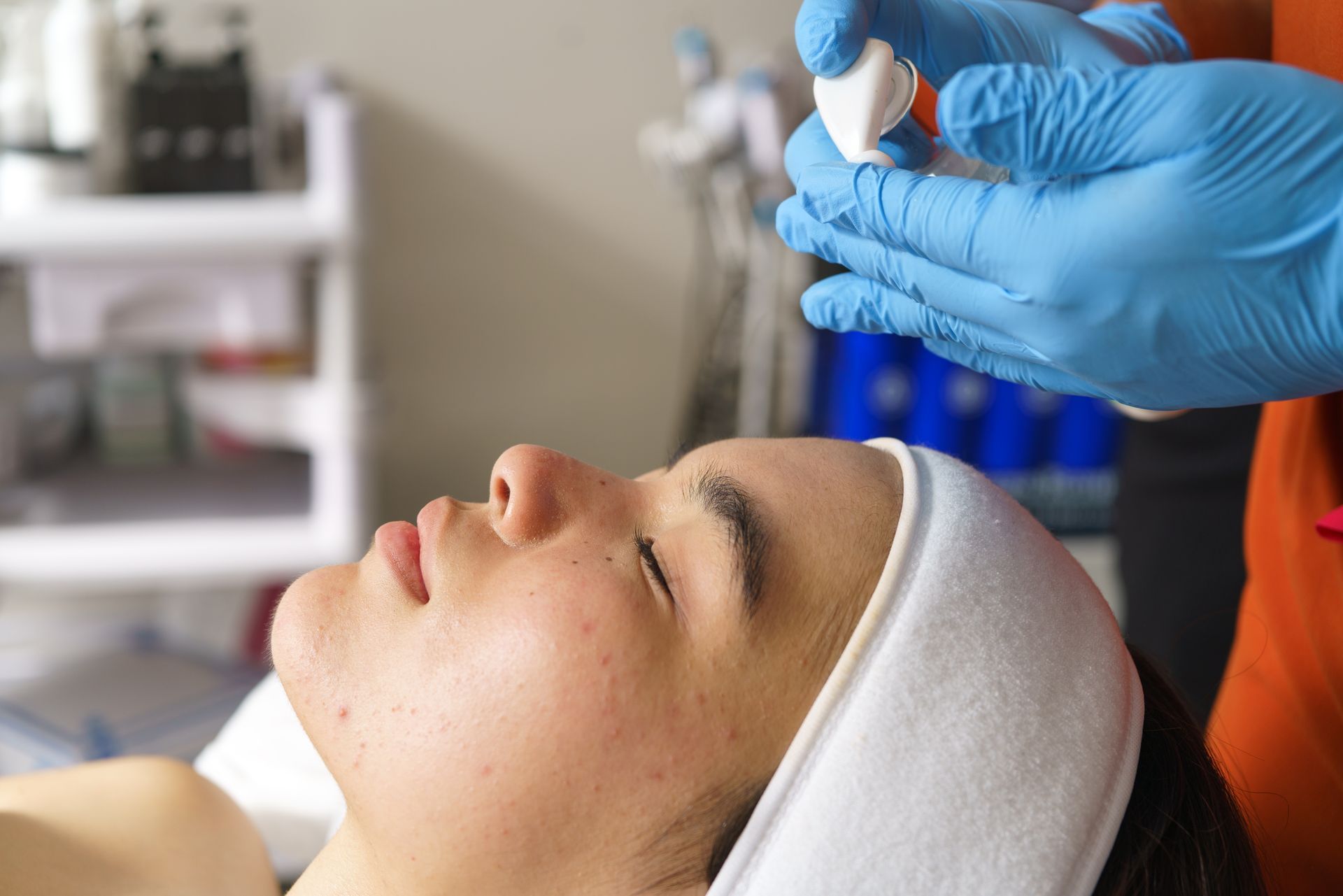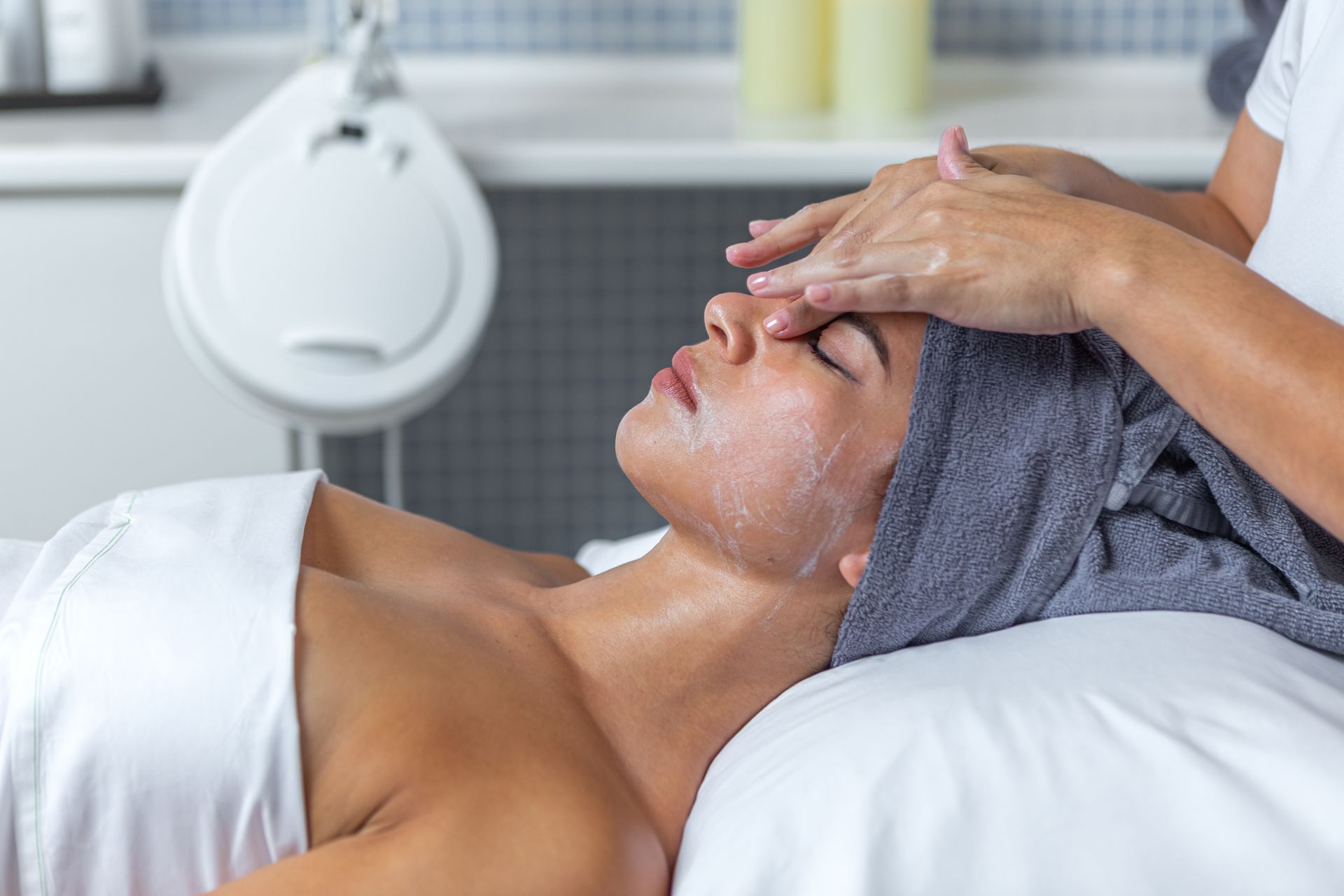Laser Skin Resurfacing Near Me | Cost, Candidacy & Outcomes

When the mirror reveals textural imperfections—whether acne scars that refuse to fade, deep lines etched by years of expression, or mottled sun damage—most skin-care routines simply can’t keep pace. You’ve likely tried exfoliating acids, microneedling sessions, and high-performance serums, only to find that improvements remain superficial and temporary. Fractional CO₂ laser resurfacing, by contrast, offers genuine skin renewal by working beneath the surface to rebuild collagen and replace damaged tissue.
This medical-grade treatment has become the cornerstone of advanced aesthetic practices in Miami and beyond. In this first section, we’ll explore how fractional CO₂ lasers function at a cellular level, why they achieve results far beyond peels or non-ablative devices, and exactly which concerns they address most effectively. We’ll also cover who can safely benefit, so you’ll know whether searching CO₂ laser skin resurfacing near me makes sense for your skin goals.
How Fractional CO₂ Laser Technology Works
At its core, fractional CO₂ laser resurfacing uses a precise wavelength of light—10,600 nm—to target water molecules in skin tissue. As the laser energy is absorbed, microscopic columns of skin vaporize, creating tiny treatment zones surrounded by untreated tissue. This “fractional” approach allows:
- Selective Ablation: Only a fraction of the epidermis is removed in microthermal treatment zones, preserving adjacent skin for faster healing.
- Controlled Thermal Injury: Heat delivered to the dermis stimulates fibroblasts to produce new collagen and elastin.
Ablative vs. Non-Ablative Lasers
- Ablative CO₂ Lasers remove layers of skin, offering dramatic improvements in fewer sessions.
- Non-Ablative Lasers heat tissue without removal, producing subtler changes over more sessions.
Fractional ablative lasers strike a balance: deeper remodeling than non-ablative methods, with less downtime than full-field ablation.
Clinical Indications: What It Treats Best
Fractional CO₂ resurfacing tackles a broad spectrum of skin concerns that topical or light therapies cannot fully resolve:
- Acne & Surgical Scars: Microthermal injury breaks down fibrotic scar bands, allowing smoother skin to regenerate.
- Fine Lines & Deep Wrinkles: Collagen remodeling softens etched lines around the eyes, forehead, and mouth.
- Sun Damage & Pigmentation: Ablation removes sun-damaged cells; the healing process restores more even tone.
- Skin Laxity: New collagen firms loose or crepey skin, improving jawline and neck definition.
- Enlarged Pores & Texture Irregularities: Surface ablation refines pore diameter and smooths rough patches.
By vaporizing damaged tissue and igniting the body’s repair mechanisms, fractional CO₂ delivers a comprehensive “reset” that topical regimens simply cannot match.
Comparing CO₂ Laser to Other Resurfacing Modalities
When evaluating resurfacing options, it helps to understand each tool’s depth, downtime, and typical outcomes:
- Chemical Peels: Superficial to medium depth; improve texture and tone but lack CO₂’s collagen-building power.
- Microneedling & RF Microneedling: Stimulate collagen via micro-injury and heat, yet cannot remove scar tissue in a single session.
- Erbium Lasers: Ablative but more superficial than CO₂; faster healing with multiple sessions needed for deep scars.
- Intense Pulsed Light (IPL): Targets redness and pigmentation, but does not remodel collagen or treat texture.
For advanced concerns—deep wrinkles, severe scarring, and extensive photoaging—fractional CO₂ remains the gold standard due to its depth of penetration and predictable remodeling.
Safety Profile & Suitability Across Skin Types
Understanding skin-type considerations is crucial for safe, effective treatments:
- Fitzpatrick I–III: Generally low risk of post-treatment pigmentation changes; ideal candidates for full settings.
- Fitzpatrick IV–VI: Higher risk of hyper- or hypopigmentation; requires conservative energy settings, pre-treatment brightening, and diligent sun avoidance.
Modern devices offer adjustable pulse durations and energy levels. An experienced provider will tailor settings, use test spots, and implement pre- and post-care protocols (e.g., topical tyrosinase inhibitors, strict photoprotection) to minimize pigment complications.
Key Takeaways
Fractional CO₂ laser resurfacing uniquely combines precise ablation with deep thermal stimulation, triggering the body’s natural collagen response. This makes it exceptionally effective for:
- Smoothing acne and surgical scars
- Softening both fine lines and deep wrinkles
- Reversing sun damage and pigmentation irregularities
- Tightening lax skin and refining texture
Its proven safety and adaptability across skin types—when performed by a qualified professional—explain why so many people searching CO₂ laser skin resurfacing near me choose this technology for transformative results.
With a clear grasp of how fractional CO₂ works and the issues it resolves, you’re equipped to evaluate candidacy, understand the procedure, and anticipate recovery. In the next phase, we’ll explore candidacy criteria, consultation best practices, and what to expect during and immediately after your treatment.
Determining the Right Candidate & What to Expect During CO₂ Laser Resurfacing
Everyone’s skin tells a story shaped by genetics, sun exposure, and life’s rhythms. Fractional CO₂ laser resurfacing holds the power to rewrite parts of that story—smoothing acne scars, softening wrinkles, and restoring a more uniform tone. But it isn’t a universal panacea. Carefully assessing candidacy and guiding patients through every step of the laser journey ensures the best outcomes and highest satisfaction. Below, we explore who typically benefits most from CO₂ resurfacing and detail exactly what happens from your first consultation through immediate aftercare.
Who Makes an Ideal Candidate?
Laser resurfacing demands not only the right skin concerns but also the right timing in a patient’s overall health journey.
Age and Skin Concerns
- In their 30s–50s, many clients seek treatment for early to moderate signs of aging—fine lines, sun spots, and mild laxity.
- Younger adults troubled by acne scarring or enlarged pores also see dramatic improvement.
- Mature skin with deep wrinkles and texture irregularities benefits from CO₂’s deeper collagen remodeling than gentler lasers.
Healing Capacity and Lifestyle
- Good general health and the ability to follow pre- and post-treatment protocols are essential.
- Non-smokers typically heal faster, as nicotine constricts blood vessels and delays recovery.
- Clients with realistic expectations—understanding that results unfold over weeks—tend to report the highest satisfaction.
Contraindications to Note
Certain conditions increase risk or reduce the treatment’s efficacy:
- Active acne or herpes outbreaks in the target area raise infection risks.
- Recent isotretinoin (Accutane) use can impair healing; doctors typically recommend waiting six to twelve months after finishing the medication.
- Photosensitizing medications (some antibiotics, diuretics) heighten the risk of burns or pigment changes.
- Autoimmune disorders or uncontrolled diabetes may slow the skin’s regenerative response.
Your Consultation: From History to Skin Mapping
Before any laser touches your skin, a thorough consultation lays the groundwork for safe, personalized treatment.
Medical and Medication Review
- A clinician discusses your full medical history, focusing on conditions like cold sores (herpes simplex) or bleeding disorders.
- Reviewing prescriptions ensures no interactions or contraindications—particularly important for topical or oral photosensitizers.
Skin Examination & Digital Imaging
- High-resolution photography and digital mapping capture baseline skin tone, pigmentation, and scar depth.
- Imaging software may simulate expected results, aligning patient expectations with realistic outcomes.
Goal Setting
- You’ll pinpoint priority areas: crow’s feet, marionette lines, acne scars, sunspots, or overall texture.
- Discussing the number of sessions (often 2–4) and expected spacing (6–8 weeks apart) clarifies investment and timeline.
- Providers may show you before-and-after galleries of similar cases for honest perspective.
Preparing Your Skin & Lifestyle Adjustments
Optimizing skin health before the laser session boosts safety and accelerates healing.
Sun Avoidance & Topical Prepping
- Begin strict sun protection at least four weeks before treatment—broad-spectrum SPF 30+ daily and physical barriers (hats, sunglasses).
- Under physician guidance, you may apply a skin-lightening agent (hydroquinone or tranexamic acid) to reduce melanin activity and lower hyperpigmentation risk.
Adjusting Skincare
- Discontinue retinoids (tretinoin, adapalene) and alpha-hydroxy acids 7–10 days before treatment to avoid excessive irritation.
- Stop waxing or depilating the area 2 weeks prior; hair removal creams without exfoliating acids may still be used up to 48 hours before.
Nutrition, Hydration & Supplements
- Drinking ample water (≈2–3 liters daily) supports tissue repair.
- A balanced diet rich in antioxidants (vitamins C and E) and omega-3 fatty acids may enhance the skin’s resilience.
- Consult your physician before adding supplements like fish oil or collagen peptides.
Step-by-Step Treatment Process
On treatment day, clear protocols make the CO₂ session efficient, comfortable, and precise.
Arrival Protocols
- Cleanse: A gentle, pH-balanced cleanser removes makeup and oils.
- Numbing: Topical anesthetic cream applied 30–45 minutes prior minimizes discomfort.
- Eye Protection: Specialized shields or goggles safeguard your eyes from stray laser energy.
Laser Parameters & Delivery
- Providers adjust energy settings (measured in millijoules) and dwell time based on skin type, concern, and tolerance.
- The laser handpiece delivers rapid pulses in a grid pattern, ensuring even coverage without overlap.
- Fractional treatment zones typically constitute 10–30% of the total area per pass, balancing efficacy with healing speed.
In-Session Comfort Measures
- Fans, cooling devices, or intermittent breaks quell heat sensations.
- Continuous communication ensures settings remain within your comfort zone.
A full-face CO₂ session often lasts 30–45 minutes; smaller zones (upper lip, around the eyes) may take just 10–15 minutes.
Day-of Sensations & Immediate Aftercare
Understanding sensations and dos and don’ts on treatment day prevents surprises and complications.
Typical Sensations
- During treatment: A warm, prickly feeling akin to tiny snap-pops on the skin; numbing cream keeps it manageable.
- Immediately after: Skin feels sunburned—warmth, mild tightness, and some redness are normal.
Immediate Post-Laser Protocols
- Cooling Packs: Applied for 10–15 minutes to soothe heat and reduce swelling.
- Occlusive Ointments: A thin layer of antibiotic or barrier ointment (e.g., Aquaphor) protects micro-injuries and locks in moisture.
- Cleaning: After the first night, gently cleanse with lukewarm water and a soft cloth; pat dry, then reapply ointment.
Minimizing Discomfort
- Sleep with head elevated to reduce fluid buildup.
- Over-the-counter analgesics (acetaminophen) help control pain—avoid NSAIDs like ibuprofen if bleeding risk is a concern.
- Keep the area dry and avoid strenuous exercise for at least 48 hours.
By combining rigorous candidacy assessment, meticulous consultation, and a well-structured treatment protocol, fractional CO₂ laser resurfacing unlocks powerful skin renewal. The next stage of care focuses on the full recovery timeline, long-term maintenance, and understanding how to evaluate costs versus value—ensuring you make an informed choice on your path to more radiant skin.
Downtime & Laser Recovery Roadmap
Immediately after laser resurfacing, expect a progression of visible changes:
- Days 1–2: Redness and Warmth
Treated areas resemble a sunburn—pink to fiery red, warm to the touch. Applying cool compresses and a physician-recommended barrier ointment calms the skin. - Days 3–5: Crusting and Peeling
Tiny dots where columns of tissue were ablated form minute crusts. These naturally slough off, revealing a fresh epidermis beneath. Avoid picking; allow gentle peeling to occur on its own. - Days 6–10: Resurfaced Glow
Redness softens to a light pink or bronze tone. Skin feels smoother and firmer. Many patients report a “baby-skin” texture—delicate, radiant, and silky. - Beyond Day 10: Gradual Fade to Normal Tone
Pigment normalizes as collagen remodeling continues. Daily SPF 30+ application guards against UV-induced hyperpigmentation (source: American Academy of Dermatology).
Safe Post-Laser Skincare
A consistent regimen prevents complications and supports healing:
- Gentle Cleansing: Use a fragrance-free, sulfate-free cleanser twice daily.
- Moisturization: Apply a bland, occlusive ointment (e.g., petroleum-based) 2–3 times daily until peeling subsides.
- Sun Protection: Physical sunscreens containing zinc oxide or titanium dioxide provide broad-spectrum defense. Reapply every two hours outdoors.
- Avoid Harsh Actives: Hold off on retinoids, AHAs, BHAs, or vitamin C serums for at least two weeks.
Measuring & Maintaining Your Results
Visible improvements—smoother texture, reduced scars, and firmer tone—emerge over weeks.
- Weeks 4–6: New collagen fibers strengthen dermal architecture, softening fine lines and improving elasticity (source: Journal of Cosmetic Dermatology).
- Weeks 8–12: Deeper wrinkles and scars become markedly less noticeable. Many clients describe their skin as “reset,” with a clarity and firmness they haven’t seen in years.
Long-Term Care
- Touch-Up Sessions: Depending on skin concerns, an annual “maintenance” fractional CO₂ session can preserve results.
- Complementary Therapies: Platelet-rich plasma (PRP) injections at day 30 speed healing and boost collagen. LED light therapy accelerates recovery and calms inflammation. Gentle chemical peels every 3–4 months help maintain tone.
Side Effects & When to Seek Help
Most post-laser responses are temporary and expected. However, be alert for:
- Excessive Swelling or Pain: Beyond mild discomfort, unusually intense swelling may signal infection or allergic reaction.
- Prolonged Redness or Itching: While some itching is normal, persistent symptoms warrant evaluation for post-inflammatory hyperpigmentation.
- Unusual Discharge or Foul Odor: These signs suggest infection—contact your provider immediately.
Routine follow-up visits allow your clinician to assess healing, address concerns, and adjust maintenance plans.
Cost Breakdown & Value Analysis
The investment in CO₂ resurfacing reflects device sophistication, provider expertise, and geographic factors:
- Single Sessions: Range from $800 to $2,500, depending on area treated (face only vs. face and neck) and laser platform used.
- Package Rates: Bundles of 2–4 treatments often reduce per-session cost by 15–25%.
- Long-Term Comparison: Over five years, CO₂ resurfacing typically outperforms high-frequency, lower-cost modalities (e.g., monthly chemical peels) in cumulative results and patient satisfaction.
Viewing CO₂ resurfacing as a strategic, lasting solution—rather than a series of quick fixes—helps contextualize both cost and transformative value.
Your Path to Renewed Skin Confidence
Fractional CO₂ laser resurfacing stands apart in its ability to remodel skin architecture, erase deep damage, and restore firmness. By understanding downtime expectations, recovery milestones, and cost structures—and by choosing a provider with proven expertise—you set the stage for a skin transformation far beyond what creams or light therapies alone can achieve.
Ready to Reveal Smoother, Firmer Skin?
Experience tailored CO₂ laser treatments in Fort Lauderdale with our expertly trained team. Explore our full range of skin services or schedule a personalized consultation today to map out your rejuvenation journey.
Discover CO₂ Laser Skin Resurfacing Near Me »



